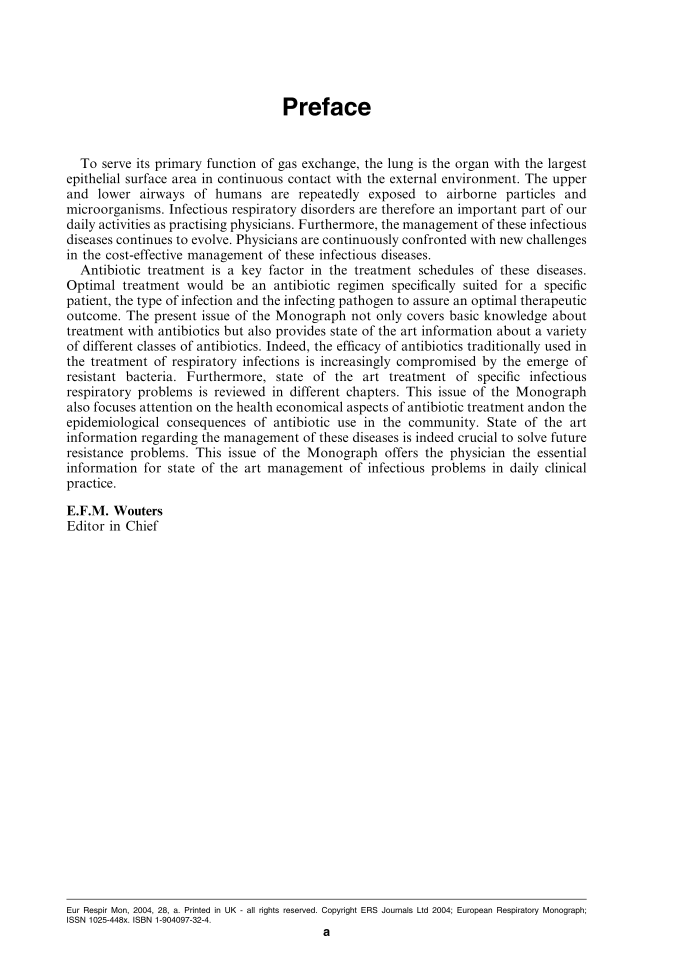Preface To serve its primary function of gas exchange, the lung is the organ with the largest epithelial surface area in continuous contact with the external environment. The upper and lower airways of humans are repeatedly exposed to airborne particles and microorganisms. Infectious respiratory disorders are therefore an important part of our daily activities as practising physicians. Furthermore, the management of these infectious diseases continues to evolve. Physicians are continuously confronted with new challenges in the cost-effective management of these infectious diseases. Antibiotic treatment is a key factor in the treatment schedules of these diseases. Optimal treatment would be an antibiotic regimen specifically suited for a specific patient, the type of infection and the infecting pathogen to assure an optimal therapeutic outcome. The present issue of the Monograph not only covers basic knowledge about treatment with antibiotics but also provides state of the art information about a variety of different classes of antibiotics. Indeed, the efficacy of antibiotics traditionally used in the treatment of respiratory infections is increasingly compromised by the emerge of resistant bacteria. Furthermore, state of the art treatment of specific infectious respiratory problems is reviewed in different chapters. This issue of the Monograph also focuses attention on the health economical aspects of antibiotic treatment andon the epidemiological consequences of antibiotic use in the community. State of the art information regarding the management of these diseases is indeed crucial to solve future resistance problems. This issue of the Monograph offers the physician the essential information for state of the art management of infectious problems in daily clinical practice. E.F.M. Wouters Editor in Chief Eur Respir Mon, 2004, 28, a. Printed in UK - all rights reserved. Copyright ERS Journals Ltd 2004 European Respiratory Monograph ISSN 1025-448x. ISBN 1-904097-32-4. a
